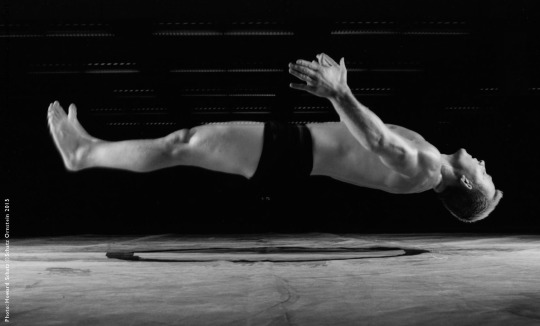
BLOG #127 1/19/2016
All photography is an illusion, of course. Pictures of people are not people, after all. But sometimes a photographer has to create an illusion in order to get at the truth.
For instance, when the great wrestler, Cary Kolat* agreed to participate in my book, ATHLETE, I needed to figure out what kind of images could be made with a single wrestler without an opponent. The challenge was to make a dynamic “wrestling” photograph when no one was wrestling.
To prepare, I began looking for “visual secrets,” as I often do when photographing athletes: How to show action in a frozen split second, and what is the action. I studied video-tapes of Olympic wrestling matches, sometimes advancing frame by frame (there are about 30 frames in a second of video) looking for the single moment that had the energy and action for a revealing image. During the matches I watched, one wrestler might throw his opponent, lifting himself up with the effort so that for the blink of an eye (and a shutter) both are off the ground. It was clear to me that the image I needed to make would show Kolat off the ground, i.e. in the air!
He and I worked for a few hours exploring ideas and eventually I asked him to explode up from a sitting position on the mat, throw himself out horizontally in the air and land flat on the mat. With each attempt of this extraordinarily athletic maneuver, he caught himself, softening his fall with his hands, bending at the waist and landing on his rear end. I was looking for complete and horizontal suspension, so I showed him Polaroid snaps of these “failures” and we (he) worked and worked at it.
I was determined to make an image showing him suspended in the air, off the mat. We (he, really) worked repeatedly, with him landing on the mat in all sorts of ways. I pushed and suggested what he needed to do, to try, to make happen. Finally, success! The wrestler burst into a fully extended horizontal position, inches off the ground before crashing to the mat; and, the image was made.
Great athletes readily take direction. If they can’t, they don’t reach the top of their sports. And if they trust their coaches, they can take unrelenting constructive criticism. They call it, “getting beat up,” and if they believe it will help them win, they yearn for it. A coach, trainer, or manager who holds back, worried about an athlete’s feelings, does the athlete no good; athletes know it. In this case, I was the coach, the goal was a photographic illusion very hard to achieve, and Kolat performed just like the champion athlete he was.
*@Cary Kolat: 5’ 5″, 138 lbs. b. May 19, 1973 in Alabaster, Alabama. Freestyle wrestler in the 63 kg weight class. He is a three-time U.S. national champion, and the Goodwill Games champion of 1998. He won the gold medal at the Pan American Games in 1999 and 2000. He competed at the 2000 Olympic Games, finishing ninth.
Photographed by Howard Schatz, July 27, 2000 at the Olympic Training Center, Colorado
